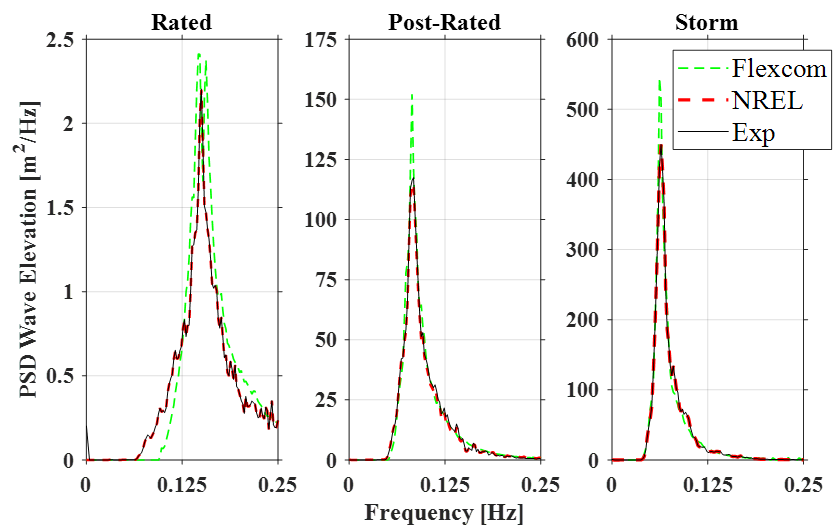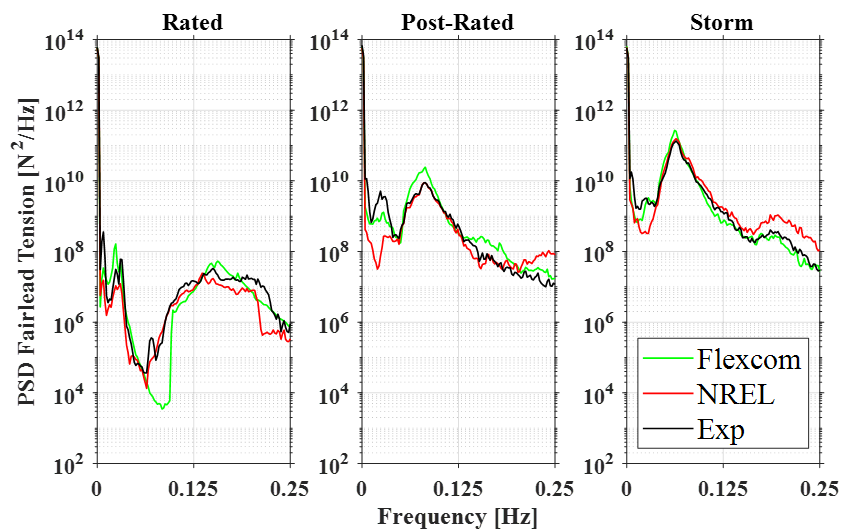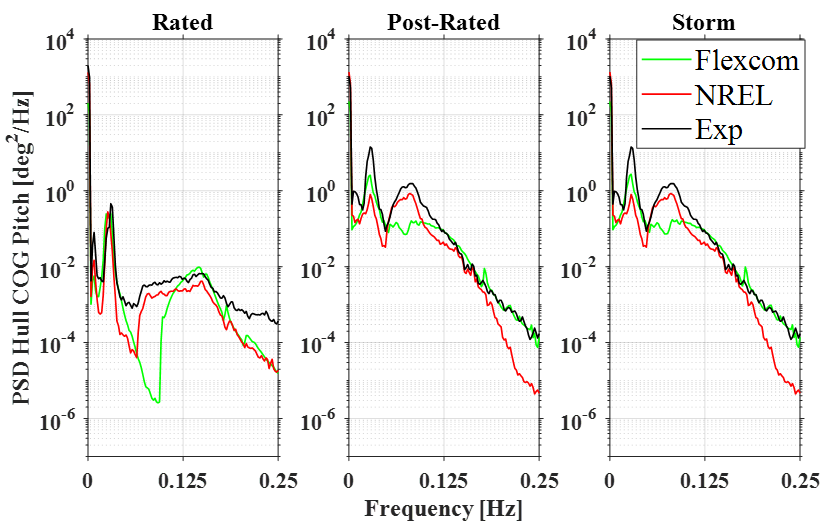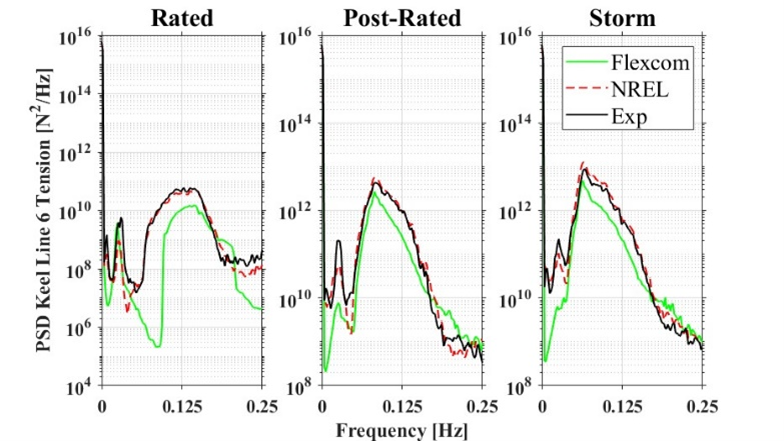The project coordinators opted to use a power spectral density (PSD) approach when examining results from the more advanced test cases (both wave only, and wind and wave combined). The following figures present PSDs of wave elevation, fairlead tension, tower base moment and hull pitch, respectively. The frequency spanned by each plot covers 0.0 to 0.25 Hz, corresponding to 4.0 s and upwards, thereby covering the range of wave excitation periods experienced by the platform.
The wave elevation PSD shows good agreement between the numerical models and the experimental data, as expected. Particularly close alignment is shown between the NREL numerical model and the tank tests, as NREL used the measured time history of water surface elevation directly in their numerical model. The Flexcom model uses a JONSWAP spectrum which provides a reasonable statistical representation of the discrete time history data. The JONSWAP spectrum appears to overpredict the spectral peak, but this occurs over a narrow range of frequencies and is unlikely to have a significant impact on model behaviour.

Wave Elevation PSD
Despite any inaccuracies in wave loading, the Flexcom model shows a very close correlation with the experimental data for fairlead tension in the windward mooring line. Some discrepancies are evident for the rated conditions where wave energy is lower, but very good agreement is shown for the more severe seastates.

Fairlead Tension PSD
Hull pitch shows good agreement between the numerical models and the experimental data. Similar to fairlead tension, Flexcom shows most deviation for the rated condition. This is possibly due to inaccuracies in the wave definition, particularly given that misalignments in wave loading (e.g., under-prediction in the region circa 0.06 – 0.12 Hz) appear to coincide with misalignments in the response parameters also.

Hull Pitch PSD
Keel lines 1 and 6, on the windward side, experience the highest tensions and therefore drive the structural design of the synthetic ropes. The NREL model shows very close agreement with the experiments for tension in keel line 6, while the Flexcom model shows some deviations. These are most likely caused by asymmetrical tensions in the equilibrium condition (see Static Keel Line Tensions). This explanation is also supported by the official OC6 publication (Bergua et al., 2023) which notes that some participants who experienced issues with the equilibrium tensions also exhibited unexpected dynamic responses. In other words, it is purely a model calibration issue. On a positive note, the project coordinators note that keel line dynamic responses are driven by inertial loading which quasi-static formulations cannot capture and highlight the importance of using higher fidelity models such as the finite element method employed by tools such as Flexcom.

Keel Line 6 Tension